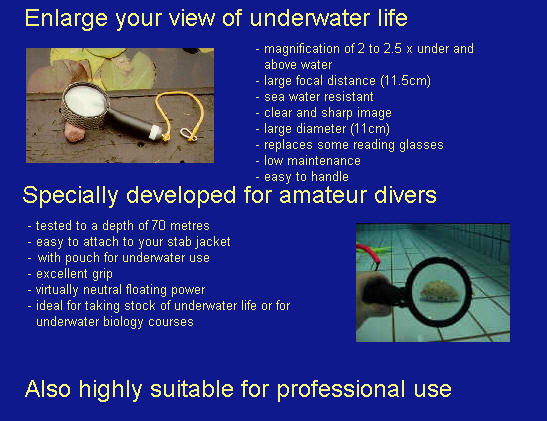 |
|
|
|
Biology? Well I am not in biology, but during the France 2005 trip there where three creatures that tracked my attention. Two looked like a colony and the other one like a giant 1.5 meter worm. Also I would like to show you a very nice Dutch invention. A underwater magnifying glass. |
| Here you find the picture of this giant
worm. I really had no idea what it was. I wrote an email to Richard Pyle. He
answered me: Hi Janwillem, It looks to me like a large pelagic Ctenophore. Here is another example: http://oceanusmag.whoi.edu/v43n2/johnsensosik-slide2.html I've seen small ones, but never as large as the one you photographed. I have no idea what species it might be. Aloha, Rich |
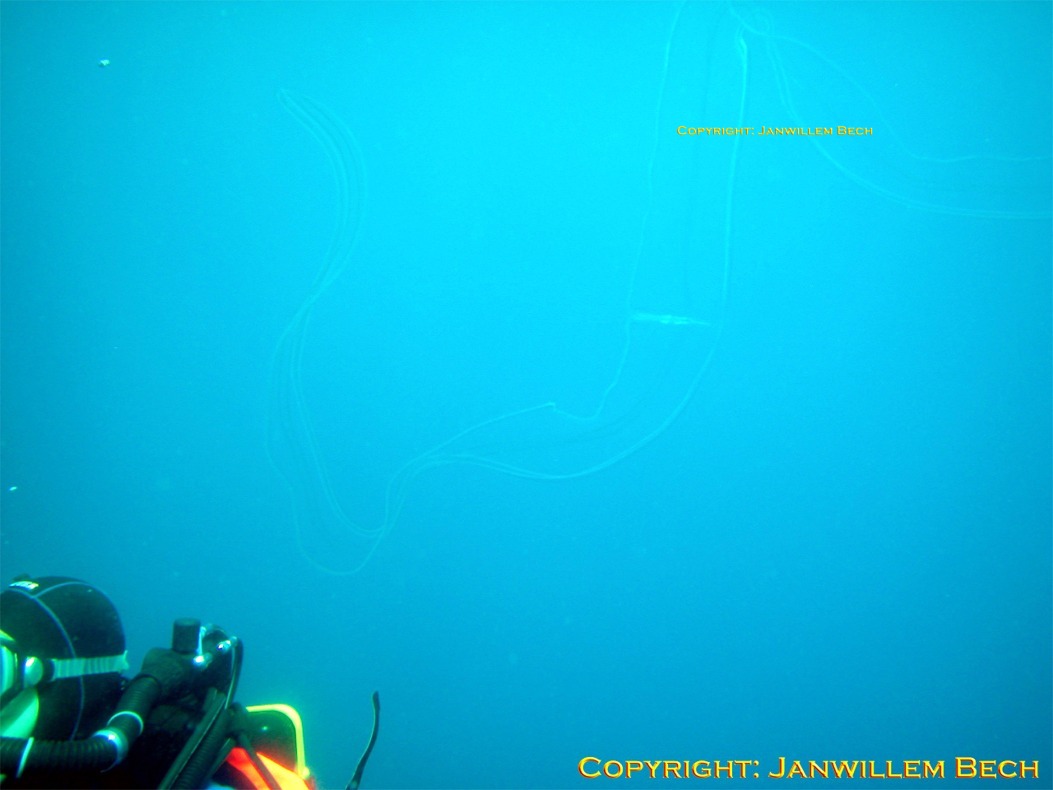 Animal 1 |
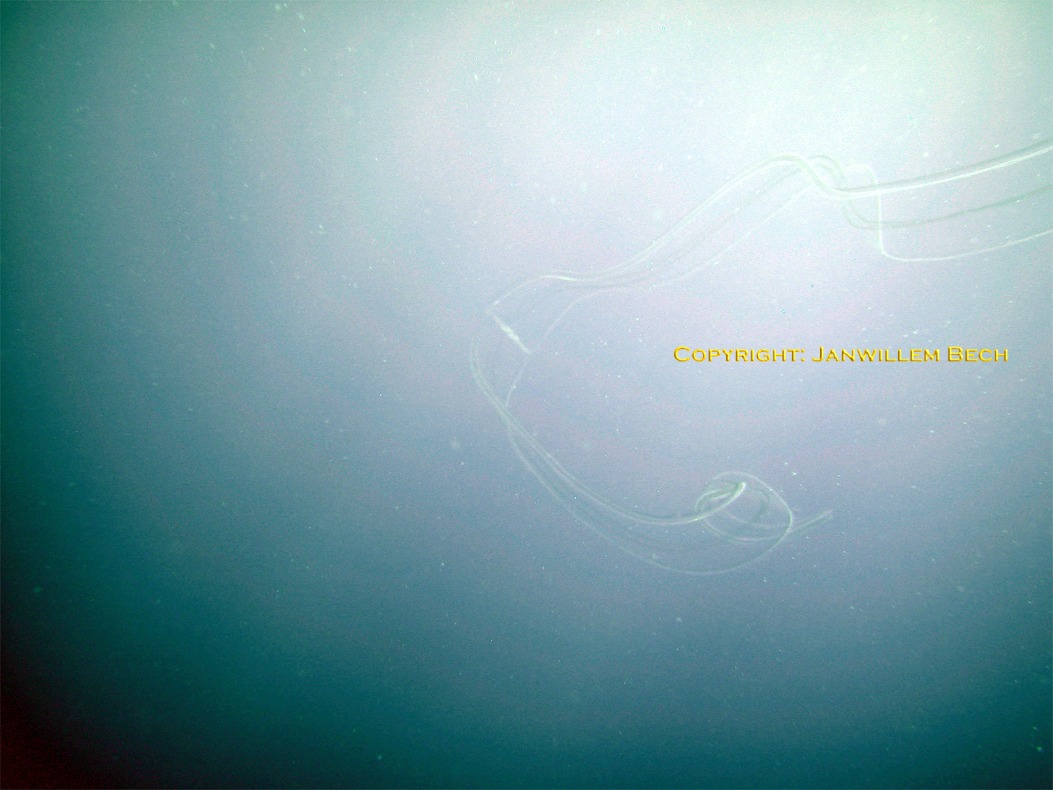 Animal 1 Dutch name: Venus gordel UK: Venus Girdle Lat: Cestum Veneris |
| Now knowing a name I contacted Dave and
Debra Wrobel of http://jellieszone.com/
and they answered me:
It appears to be a comb jelly known as the Venus' girdle (Cestum veneris),
http://jellieszone.com/cestum.htm .
They're impressive creatures and rarely encountered - I've only seen one or two in years of diving.
Dave Wrobel
|
| On Dave's web there is a description of the
animal: Consider yourself fortunate if you encounter this impressive comb jelly in California waters. A cosmopolitan inhabitant of tropical and sub-tropical seas, the Venus' girdle is an infrequent visitor in surface waters as far north as Monterey Bay. With its ribbon-like shape and length up to 1.5 meters (although usually not exceeding 80 cm) , it's hard to mistake with any other comb jelly, with the exception of its far smaller relative, Velamen parallelum. Cestum is generally transparent, but may have a violet color and yellow pigment on the tentacles, canals and near the tips. Gonads form a continuous line along the length of the body, unlike those of Velamen, which have a broken appearance. Tentacles are attached to a groove that runs along the oral edge, which is positioned forward as the comb jelly swims. The tentacles trail back over the body during normal swimming motion. Copepods and other small zooplankton prey are captured by the tentacles and transported to the mouth which lies at the center of the leading edge. The comb rows are on the aboral edge of the body, opposite the tentacles and mouth. When disturbed, Cestum has an escape response that consists of rapid undulation in a direction perpendicular to the direction of normal swimming. It can appear worm-like when using this response. The tissue is very delicate and easily broken apart by disturbance from a diver or during an attempt at collection. |
| Cestum
veneris Lesueur, 1813 - Venus' Girdle Phylum Ctenophora / Order Cestida / Family Cestidae |
| http://www.itis.usda.gov/servlet/SingleRpt/SingleRpt?search_topic=TSN&search_value=53938 |
| The other animal looked like a giant collection of little fish. There seem to be a Latin name so here we go with the pictures: |
 Animal 2 is probably some type of siphonophore (I don't know which one though): http://jellieszone.com/siphonophore.htm. |
When the animal is photographed in close-up: |
 Animal 2 |
| A friend of me Hans van Lent recognized the animal as: |
 Animal 3 |
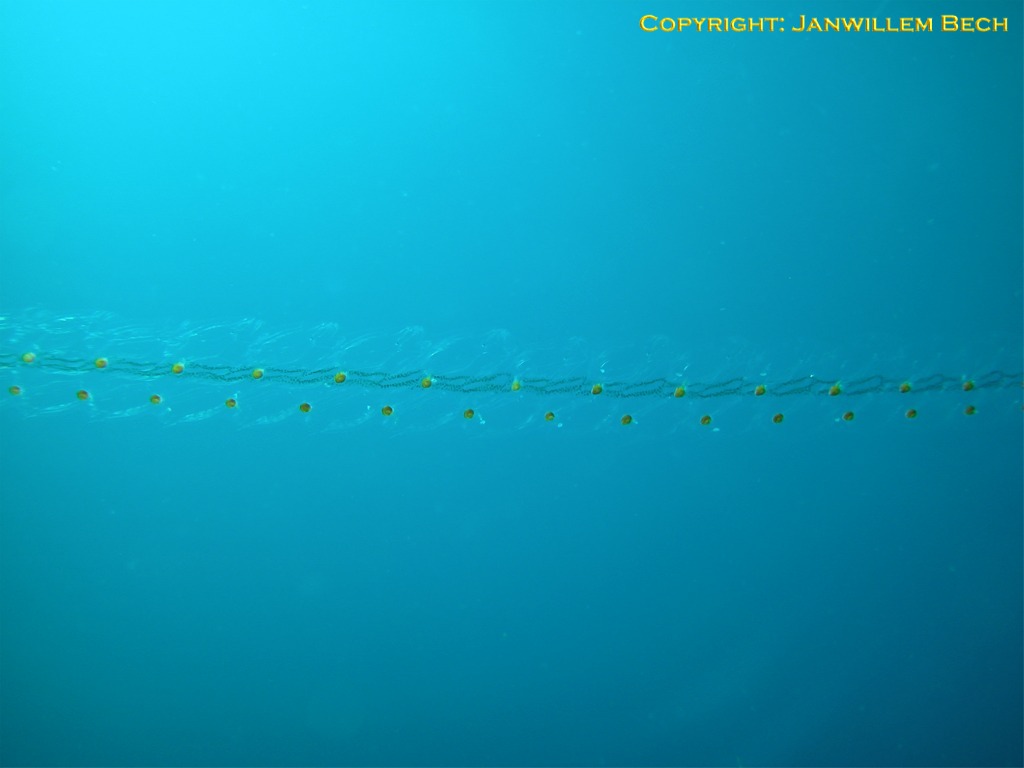 Animal 3 |
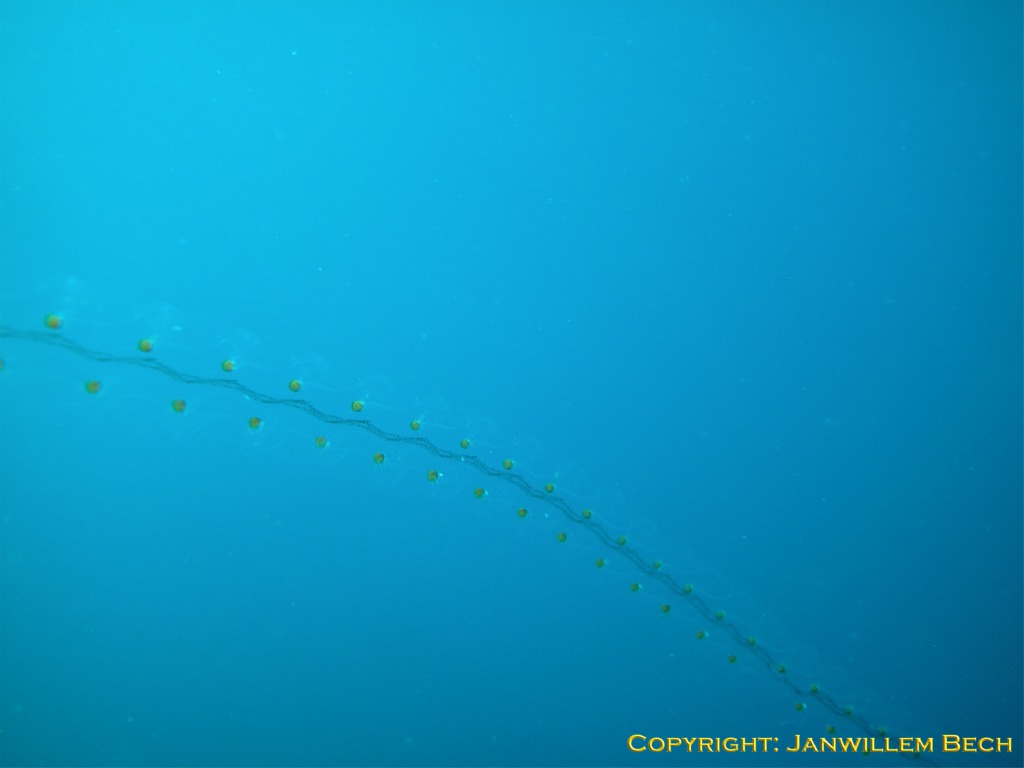 Animal 3 |
| Thalia
democratica (Forskal, 1775) ?
Dave and
Debra Wrobel of http://jellieszone.com/
wrote:
|
| Finally I would like to introduce you a Dutch invention by Jos Schulte. He made a real underwater magnifier that works fantastic. I took the magnifier to 82 meters without any problems. The instrument is made of two lenses that are separated by an air filled space. |
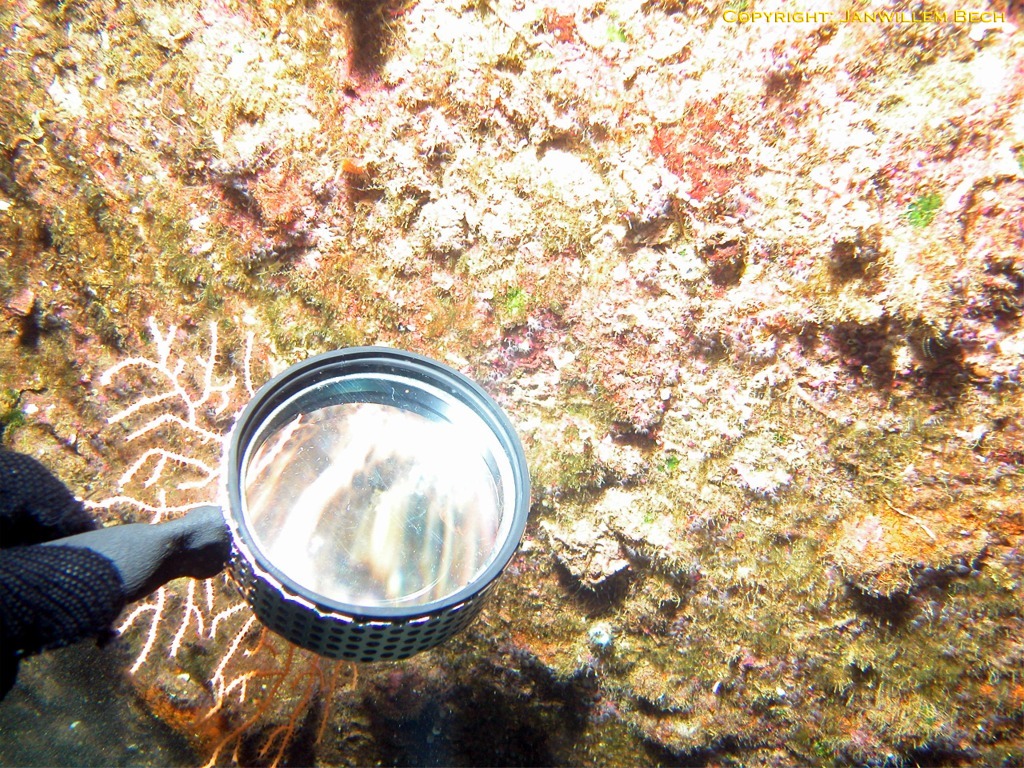 |
|
|
| Jos made a very professional product that is
worth the euro 96,-. It is delivered in a very nice bag. The price is
without freight. You can find all details on his website : http://home.hetnet.nl/~JS.Schulte/startenglish.htm |
|
|
